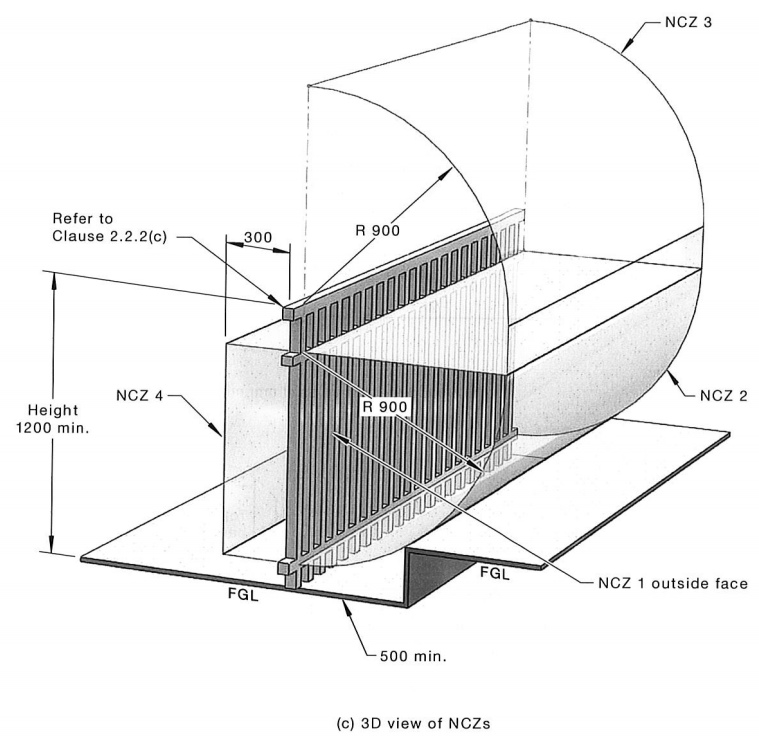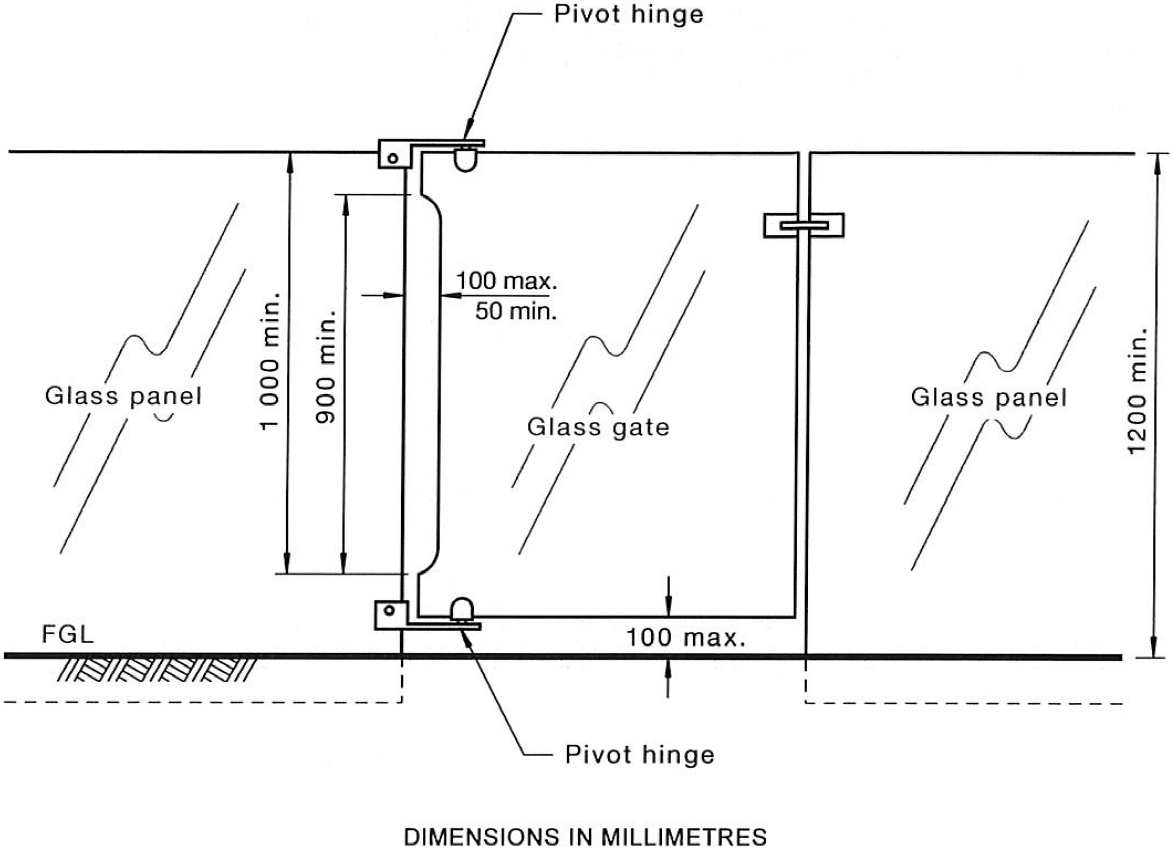Information
-
Site
-
Civica Authority Reference
-
Location
-
Conducted on
-
Prepared by
-
Others present:
Signage
-
Is there a warning notice (CPR Chart) erected?<br>Act s17
-
Please photograph the sign.
-
Is the sign legible from 3 metres?<br>Reg Cl 11(a)
-
Is the sign in a prominent position in the immediate vicinity of the swimming pool?<br>Act s17(1)
-
Is the sign clearly legible?<br>Reg. Cl 11(b)
-
Does the signage contain:
-
the words "YOUNG CHILDREN SHOULD BE SUPERVISED WHEN USING THIS SWIMMING POOL"
-
the words "KEEP ARTICLES, OBJECTS AND STRUCTURES AT LEAST 900MM CLEAR OF THE POOL FENCE AT ALL TIMES"?
-
the words "POOL GATES MUST BE KEPT CLOSED AT ALL TIMES"?
-
details of resuscitation techniques for infants, children and adults?<br>Reg. Cl 10(1)(b)
-
drawings with key words in bold print?<br>Reg. Cl 10(1)(b)(iii)
-
a statement that formal instruction in resuscitation is essential?<br>Reg. Cl 10(1)(c)
-
a simple flow sequence for CPR?<br>Reg. Cl 10(1)(b)
-
The name of organisation that published the sign?<br>Reg. Cl 10(1)(d)
-
the date of its publication?
General
Barrier - General
-
Does the barrier separate the pool from ALL residential buildings or places adjoining the premises?<br>Act s7(1)(a)
-
Note: Residential building is defined by the Act:
"residential building means a building (such as a dwelling-house, residential flat building or boarding-house) that is solely or principally used for residential purposes, and includes any structure (such as a garage or shed) that is ancillary to any such building, but does not include:
(a) a building that merely forms part of a complex of buildings (such as a school or recreational centre) that is principally used for non-residential purposes, or
(b) a moveable dwelling, or
(b1) tourist and visitor accommodation, or
(c) a shed that is ancillary to a swimming pool and the primary purpose of which is to store equipment that is used in connection with the swimming pool (but not a shed of a kind prescribed by the regulations), or
(d) a building or structure of a kind prescribed by the regulations." -
Is the barrier a permanent structure?<br>As1926.1-2012 s2.1
-
Is the barrier in a good state of repair as an effective and safe child-resistant barrier?<br>Act s15(1)
-
Is the area within 500mm of the barrier free of any features or objects that would reduce the height of the barrier?<br>As1926.1-2012 s2.3.1
-
Features diagram
-
Is finished ground level a permanent stable surface?<br>As1926.1-2012 s1.3.6
-
Is the gap between bottom of barrier and finished ground level no greater than 100mm?<br>As1926.1-2012 s2.3.7
-
Is the barrier a permanent structure?
-
Are all parts of the barrier (other than retaining walls) vertical?
-
Are the non-vertical parts of the barrier leaning away from the pool?
-
Are the non-vertical parts of the barrier leaning away from the pool BY NO MORE THAN 15 DEGREES?
-
Is the width of all vertical gaps <100mm?<br>As1926.1-2012 s2.3.6
Internal Pool Barrier
-
Are there parts of the barrier that are NOT boundary fences?
-
Is the height of all internal barriers from top of fence to finished ground level on the outside of the pool area NO LESS THAN 1200mm?<br>As1926.1-2012 s2.1
-
Are there internal parts of the barrier that measure more than 1800mm in height? (measured on the OUTSIDE of the pool area)
-
Please photograph these sections.
-
Are there internal parts of the barrier measuring LESS THAN 1800mm in height?<br>(non-boundary barriers <1800mm have NCZs applied)
-
3D NCZ DIAGRAM
-
NCZ1 clear?<br>NCZ1 is measured vertically on outside face of barrier.<br>No handholds or footholds, or objects or plants that will facilitate climbing in NCZ.<br>No projections or indentations with horizontal surface >10mm.<br>As1926.1-2012 s2.2.2(a)
-
NCZ2 clear?<br>NCZ2 is a quadrant measured the outside of the barrier created by 900mm radius down from the top of NCZ1.<br>No handholds or footholds, or objects or plants that will facilitate climbing in NCZ.<br><br>Note: NCZ2 is always immediately adjacent to NCZ1 on all barriers<br>As1926.1-2012 s2.2.2(b)
-
NCZ3 clear?<br>NCZ3 is a quadrant on the outside of barrier created by a 900mm radius UP from the top of the barrier<br>No handholds or footholds, or objects or plants that will facilitate climbing<br><br>Note: If the top of NCZ1 is below the top of the barrier, NCZ3 extends vertically down to the top of NCZ1.<br>Note: NCZ3 does not apply to any item or component on, or that is part of, the barrier. NCZ3 is applicable only to the space created by the quadrant.<br>As1926.1-2012 s2.2.2(c)
-
NCZ4 clear?<br>NCZ4 is a 900mm high by 300mm deep rectangular space on the inside of the barrier, aligning with NCZ1.<br>No handholds or footholds, or objects or plants that will facilitate climbing in the NCZ.<br><br>Note: Only applies where barrier has vertical openings 10mm - 100mm in width.<br><br>As1926.1-2012 s2.2.2(d)
Boundary Pool Barrier
-
Are there boundary fences acting as a barrier to the pool?<br>AS1926.1-2012 2.2.4
-
NCZ5 diagram
-
Are all parts of the boundary barrier no less than 1800mm, measured from inside the pool area?<br>As1926.1-2012 s2.2.4
-
NCZ5 clear?<br>NCZ5 is a quadrant of 900mm radius, measured down from the top of the inside of the boundary pool barrier<br>No handholds or footholds, or objects or plants that will facilitate climbing in NCZ.<br>As1926.1-2012 s2.2.4(a)
-
Where internal pool barrier intersects into NCZ5, does the top of internal barrier: <br>- measure less than 50mm and intersect at angle between 45 and 135 degrees,<br>OR<br>- continue at >1800mm for at least 900mm.<br>As1926.1-2012 s2.2.4(b)
Perforated material or mesh AS2916.1-2012 2.3.2
-
Are any parts of the barrier formed by perforated and/or mesh materials?
-
Are there any apertures greater than 100mm?<br>Note: apertures shall be measured horizontally across their widest part.
-
Are there any apertures greater than 13mm?
-
Does the part of the barrier with apertures greater than 13mm have a height of not less than 1800mm?
-
Support a 25kg weight on the top of the barrier.
-
Does the 25kg weight reduce the barrier height to less than 1200mm?
-
Lift the bottom of the barrier with a force of 100N.
-
Does this result in a gap between the bottom of the barrier and the surface beneath of more than 100mm?
-
Was a force gauge or similar device used?
Windows
-
Are there windows directly opening into the pool area?
-
Enter information for each window.
Window
-
Photograph the window
-
Describe the location of the window in the pool area.
-
What is the height of the sill of the lowest opening panel of the window to the finished ground level in the pool area?
-
Which of the following applies?
-
Are the bars or the metal screen fixed to the building with fasteners that can only be removed by the use of a tool?
-
Is the window fixed to the building with fasteners that can only be removed by the use of a tool?
Gates
Gates
-
Make entry for each gate into the pool area.
Gate
-
Photograph this gate
-
Describe the location of this gate in relation to the pool area.
-
Is the gate kept securely closed?<br>Act s16
-
Does gate swing away from pool area?<br>As1926.1-2012 s2.4.1.1
-
Does gate swing freely through its entire arc of operation? (i.e. cannot be wedged open)<br>As1926.1-2012 s2.4.1.1
-
Is the gate's full arc of operation clear of any building or doorway?<br>As1926.1-2012 s2.4.1.1
-
Confirm overall height >1200mm (on outside of pool area)?<br>As1926.1-2012 s2.1
-
Does the self-closing device close the gate, with a stationary start, without the application of a manual force and operates the latch from:
-
gate resting on latch position?<br>AS1926.1-2012 s2.4.1.2
-
partially open positions?<br>AS1926.1-2012 s2.4.1.2
-
fully open position?<br>AS1926.1-2012 s2.4.1.2
-
From any position after a 25kg weight has been placed on the top rail or component, 100mm from the outer edge of the locking stile of the gate for 30 seconds and then removed?<br>AS1926.1-2012 s3.4
-
Are the hinges outside NCZs 1 and 2?
-
Do the gate hinges have a top surface sloped at 60 degrees to the horizontal or more?
-
Do the gate hinges create an opening between the gate post and the stile of more than 10mm?<br>AS1926.1-2012 cl2.4.3
-
Do the gate hinges protrude out from the barrier with a horizontal top surface depth greater than 10mm?
-
Is the gate glass?
-
Does the gate use top and bottom pivot style hinges?
-
Glass gate with pivot hinges
As1926.1-2012 figure 2.4 -
Does the gate comply with the dimensions of this diagram?
-
Is the gap under the closed gate less than 100mm?<br>AS1926.1-2012 s2.4.1.1
-
Lift gate upwards and pull downwards with a force of 250N.<br>The above movement of the gate must not:<br>1. Release the latch<br>2. unhinge the gate<br>3. increase gap under gate to >100mm<br><br>AS1926.1-2012 s2.4.1.3
-
Was a force gauge used to measure force applied?
-
The latch must NOT be able to be:
-
inadvertently adjusted during operation.<br>AS1926.1-2012 s2.4.2.1
-
locked in the 'open' position.<br>AS1926.1-2012 s2.4.2.1
-
adjusted without the use of tools.<br>AS1926.1-2012 s2.4.2.1
-
Is the release point for the latch NO LESS than 1500mm from finished ground level?
-
Does the gate have vertical openings greater than 10mm?
-
Is the release point for the latch on the outside of the barrier?
-
Is the release point in such a position that to release the latch from the outside it will be necessary to reach over or through the barrier at a height of not less than 1200mm above the finished ground level or not less than 1000mm above the lower horizontal member?
-
Is a hand-hole provided in the gate?
-
Is the release point for the latch at least 150mm below the edge of any hand-hole provided?
-
Is release point for latch at least 150mm below the top of the barrier?
-
Are there NO openings greater than 10mm within an area bounded by:<br>a) an effective radius of 450mm from the latch release; and<br>b) the top of the barrier, if this intersects the area described in a)?
-
Is the shield free of sharp edges?
-
Are the edges of the adjacent parts of the shield on the gate and the barrier rounded or chamfered to prevent a hazard when the gate closes?
-
Is a hand-hole provided in the gate?
-
Is the release point for the latch at least 150mm below the edge of any hand-hole provided?
-
Is the bottom of the opening no less than 1200mm above finished ground level?
-
Which is higher - the top of the hand-hole, or a point 150mm above the top of the latch release?
-
Does the shielding extend up to a horizontal line through the top of the hand-hole?
-
Does the shielding extend 150mm above the top of the latch release?
-
Is release point for latch at least 150mm below the top of the barrier?
Retaining walls and balconies
-
Are there any retaining walls or similar features that act as a barrier?
-
Are there retaining walls (or similar features) ABOVE the pool level?
-
Are all retaining walls (or similar features) ABOVE the pool sloping away from the pool by 15 degrees or LESS?
-
Is the retaining wall (or similar feature) ABOVE the pool 1800mm or more in height?
-
Are there retaining walls (or similar features) BELOW the pool level?
Strength and Rigidity
Strength and Rigidity
-
Conduct strength and rigidity checks to vertical openings - apply 150N of force to a testing apparatus.
-
Is a 105mm diameter metal cone able to pass through any opening when 150N of force is applied?<br>AS1926.1-2012 s3.1 & Appendix A
-
Was a forge gauge or similar measuring device used?
-
Conduct strength and rigidity checks to posts and footings - apply 330N of force at 1200mm height.
-
Is there any permanent damage to the post? <br>AS1926.1-2012 s3.2
-
Did the footings loosen to impair the effectiveness of the barrier?<br>
-
Was a forge gauge or similar measuring device used?
-
Conduct strength and rigidity test to rails/horizontals - apply 330N of force.
-
Is there any breaking, sign of fracture, loosening so the effectiveness of the panel is impaired, or permanent deformation by more than 1/200 over its length.<br>AS1926.1-2012 s3.3
-
Was a forge gauge or similar measuring device used?
Overview
-
Take photographs showing the general condition and arrangement of the barrier here, including compliant areas.
-
Additional Comments
-
Do you consider there to be a significant risk to public safety?
-
Section 23A(1) of the NSW Swimming Pools Act 1992 (as in force at time of writing) allows the Council to carry out some or all of the requirements of a direction it has given if the Council considers that the requirements of the direction need to be carried out urgently as there is a significant risk to public safety.
-
What is the nature of the risk to public safety?
-
Do you consider the safety of a person to be at risk?
-
If Council considers that the safety of a person is at risk if the requirements of a direction were not carried out as soon as possible, it may serve the direction without notice. See section 23(6) of the Swimming Pools Act 1992.
-
What is the nature of the risk?










![CC assessment class 1& 10 (incl. NCC 2019 Vol 2 DTS [NSW]) CC assessment class 1& 10 (incl. NCC 2019 Vol 2 DTS [NSW])](/media/9fe28b09-2eb6-4714-8137-613cfbdee079)






